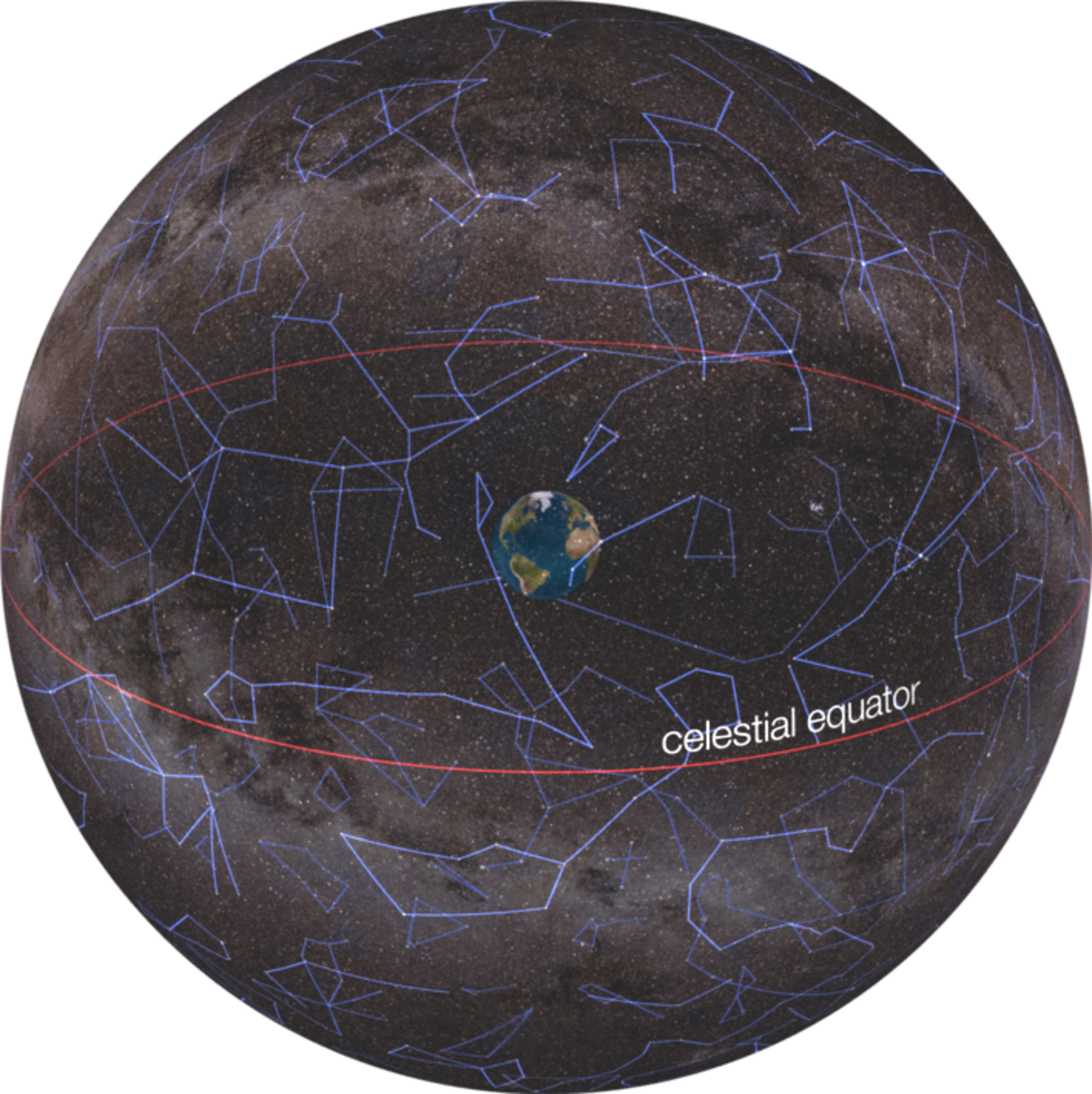celestial sphere
Introduction
Looking up at the night sky, you might get the impression that the stars are all at the same distance from you as if they were on the surface of a sphere. This imaginary sphere is called the celestial sphere. Although we know that the stars have very different distances, the concept of the celestial sphere is still very useful, especially when we discuss the position of the stars. If we want to calculate when a star will rise or when it will reach the highest point on its path, the distance of the star is irrelevant.

The imaginary celestial sphere around the Earth
Radius of a fake sphere?
Let us think a bit about what might be the radius of this imaginary sphere. Naturally, as it is not a real object, we can choose whatever radius we want. The most convenient solution is to choose the radius to be infinitely large. The advantage of this choice is that, in this case, it doesn’t matter where is the centre of the sphere compared to us. Hence, it makes no difference whether we describe a celestial phenomenon from the point of view of the observer on the surface of the Earth (this is called a topocentric system) or from the point of view of an imaginary observer at the centre of the Earth (assume for a second, that he can see through the Earth), which would be called a geocentric system.
Another advantage of this view is that if we take the radius to be infinite, then all parallel lines will intersect at the same point. Accordingly, if observers at different locations observe the same point on the sphere with infinite radius, they will be looking along parallel lines, and looking in a given direction, all observers will see the same thing.
CAVEATS
The celestial sphere is a useful concept, and it is the basis of our celestial coordinate systems. However, we have to be cautious when using this model. Most of the objects we are studying, such as galaxies or quasars are sufficiently far away, so approximating their distance as infinity will not introduce significant errors in our calculations. However, for example, the Moon will look at different positions compared to distant stars when viewed from different points on Earth. This phenomenon is called diurnal parallax.
Here are some animations showing the diurnal parallax of the Moon.
